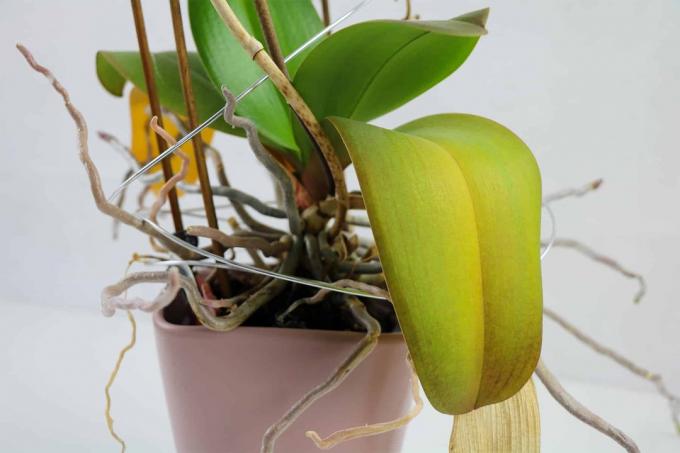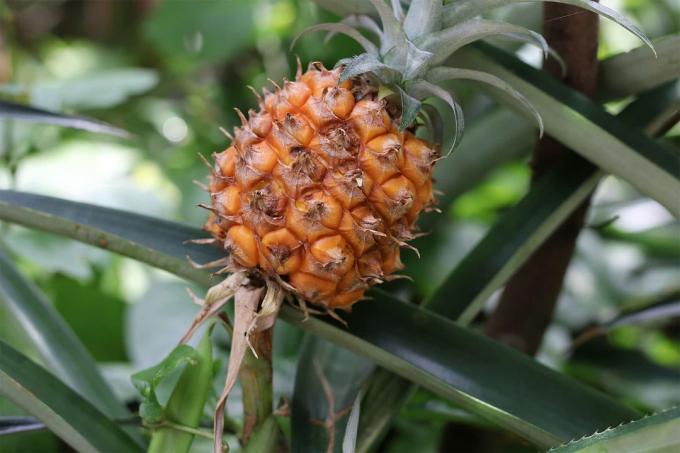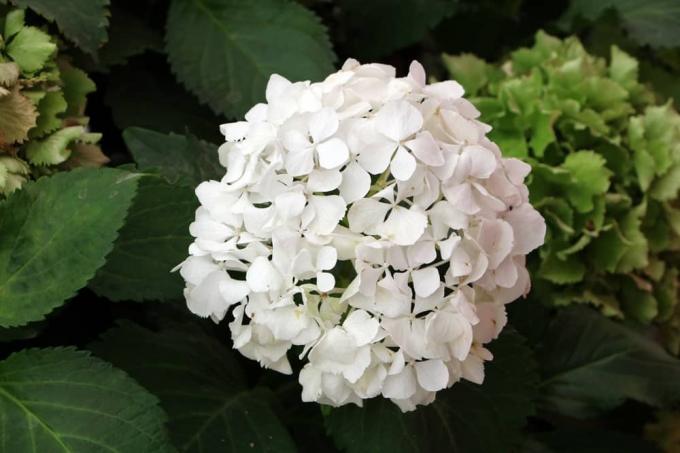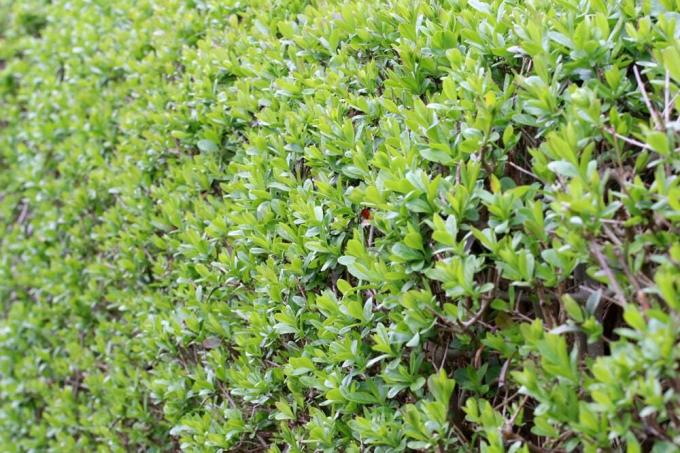

Table of contents
- The best time
- Instructions for shape and maintenance cut
- Tips on parenting
- Possible forms of education
- Education
- The right cut as a solution to the problem
- Conclusion
In order for a lemon tree to unfold its paradisiacal splendor to perfection, pruning takes on a central position in the round of care factors. Here it is primarily the exact cut and the exact time that cause uncertainty among hobby gardeners. The following instructions show in detail what is important when it comes to shape and maintenance cuts. There are also practical tips for pruning a young citrus tree. The question of the perfect time is no longer a headache either. How to properly prune the lemon tree.
The best time
Since a lovingly tended lemon tree constantly bears blossoms and fruit, the question of the ideal date for the pruning is very justified. The actual growth behavior provides valuable clues for the answer. Although there is no real break in vegetation, the citrus plant at least minimizes its activities in winter. Since every pruning stimulates the branches to sprout more at the same time, this results in this optimal time:
- Ideally, prune a lemon tree in late winter or early spring
- Growth is still at a reduced level
- The new shoot is imminent
Anyone who can assess the phase of the main flowering and harvest on a well-established lemon tree will reach for the pruning shears again at the end. Proper, restrained pruning will lure out another growth spurt with an abundance of new buds.
Instructions for shape and maintenance cut
The quality of the cutting tool is just as relevant as the cut itself. Therefore, pay a little attention to citrus scissors beforehand. It should be freshly sharpened and carefully disinfected with high-proof alcohol. This prudence prevents both an unhealthy crushing of the shoots and infestation by diseases or pests. The pruning process takes place in these steps:
- Cut off dead branches at the base
- Cut along a branch, neither flat along the trunk nor with a long stub
- Cut out weak branches that cannot bear fruit
- Prune partially dried shoots back into healthy, green wood
- Shorten steeply rising and crossing branches
- Thin out the crown so that light and air can reach all areas
Always position the scissors 2-3 mm above an outward-facing bud. In this way you animate the budding in the desired direction. Holding the tool at a slight angle is advantageous so that escaping plant sap runs off quickly. The special grace of a lemon tree comes into its own with a round crown. Therefore, cut the shape in several stages and repeatedly step back several steps to examine the result so far.
Tip:
When pruning a lemon tree, fruit-bearing branches are not cut.
Tips on parenting
A competent training pruning sets the course for a perfectly shaped stature in a lemon tree from an early age. At the same time, practiced hobby gardeners ensure vital and resilient plant health, which results in a rich harvest of delicious citrus fruits. The following tips would like to contribute to this.
Possible forms of education
A lemon tree offers multifaceted variants in the design. Before you tackle a parenting cut, you should decide on the final silhouette.
spherical shape
Probably the most popular shape for a citrus tree with a round crown on a short trunk. The spherical shape is particularly effective in the bucket. In addition, it is ideally suited for planting in the bed of a small garden, as it takes up little space.
bush shape
This design corresponds particularly well with the natural growth form, with the lemon tree already branching out at the base. Therefore, an alternative cultivation on the trellis is possible, but is rarely carried out in the hobby garden.
low stem
In addition to the spherical shape, this form of training is favored in ornamental gardens and conservatories. The advantages are obvious: the branches are easy to reach for cutting and harvesting. Outdoors, the spreading crown shades the trunk to protect the delicate bark from the elements.
standard
This modification is rarely found in the local latitudes, because a lemon tree several meters high is a rarity. In mild wine-growing regions, it is at least worth trying to prune the trunk from year to year in order to breed it upwards.
Education
Largely independent of the defined growth form, the training of a young lemon tree follows a uniform pattern. The highest directive is to create a robust basic structure, whereby the targeted final shape of the crown is determined.
- Shorten young shoots from a length of 20 centimeters to achieve a compact growth habit
- Determine 2-3 stable branches to support the scaffolding branches and leave them there
- Consistently cut competitive instincts at the base
- Cut off the skeleton branches next spring to 20 centimeters in order to grow 3-4 new shoots
- Continue in this rhythm until the desired branching is reached
This approach may require repeated pruning between March and September for the first few years. If the lemon tree sprout again, cut back again as soon as the fresh leaves have turned a dark green color. As part of this repeated maintenance routine, you can easily control the erratic growth that young lemon trees tend to have. Once the desired habit has been achieved, switch to the one-time maintenance cut cycle according to the instructions shown. It is important to note that the main shoot always protrudes 10-15 centimeters over the remaining branches. In this way you will make the required juice scale.
Tip:
Do not allow any Zwiesel on the leading drive. On the young lemon tree, the branches often tend to branch twice. Although this circumstance is desirable for all other shoots, it should be prevented on the main shoot by removing the weaker specimen.
The right cut as a solution to the problem
In addition to the cut shapes shown, shape, maintenance and training cuts, reaching for the citrus scissors can solve many a problem on the lemon tree. One of the most common types of damage occurs when a healthy branch breaks under the load of too large or too many fruits. A similar damage occurs when the tree in the bucket on the terrace is knocked over by a strong gust of wind. Regardless of the point in time, there is an immediate need for action in this case. How to do it right:
- Smooth out the crack with a sharp knife
- This also applies to damage to the trunk
- A high-oval wound heals faster than a round-shaped one
- Seal small wounds with pure charcoal ash to prevent fungal spores from entering
- Treat wounds larger than a two euro coin with a wound sealant
- Never spread the wound closure over the entire surface, but along the outer edge
If the break occurred a considerable distance from the next bud, cut the branch back to there so that there is no unwanted 'coat hook'. As a precaution, if in doubt, harvest one or the other lemon early to relieve the branches.
Conclusion
The form and maintenance cut should not be missing in the expert care protocol of a lemon tree. In this way, you give a lovingly tended citrus plant a magnificent silhouette, keep the girth under control, support the crop yield and promote vitality. On established trees, early spring is considered an excellent time when new shoots are imminent. If the lemon is still in the training phase, experienced hobby gardeners repeatedly use scissors from March to September to guide the tree in the desired direction of growth. If you follow these instructions, you will be familiar with all the essential factors of a successful cut.
 garden editorial
garden editorial I write about everything that interests me in my garden.
Learn more about caring for plants

Plant hangs leaves despite water
If plants let their leaves hang despite water, this can have various causes. In order to prevent it from dying off by taking rapid countermeasures, you should find out about the possible causes and effective countermeasures here.

Plants hang their heads: what to do?
If the ornamental plants are cultivated in the garden or in pots and suddenly let their heads droop, then the question quickly arises as to why this can be. However, this is usually due to maintenance errors that need to be checked. If a remedy is found, most plants usually recover quickly.

Repot orchids: how & when to replant
Thanks to more uncomplicated and easy-care new breeds, orchids are now at home on many windowsills. In particular, the Phalaenopsis or butterfly orchid, which is available in countless varieties, is very popular. Read how and when you can best repot the distinctive beauties.

pull tree out of core | 7 tips for growing a tree yourself
Trees can be grown from cores without much effort. There are a variety of plants that have seeds and can be easily cultivated in your own garden. Special classic fruit trees should be mentioned, which are suitable for such a project.

How do hydrangeas stay white? | That way it won't turn pink
How do hydrangeas stay white - this is the question many hobby gardeners ask themselves when the hydrangea changes color. The white often turns into a pink, which is usually comparatively pale or can appear "dirty". Here we reveal how it works.

Cutting privet: when is the best time?
Privet is becoming increasingly popular and is often used as a privacy screen in the form of a privet hedge. This is not surprising, because the plant is easy to care for and fast-growing. However, it is crucial to cut the plant regularly at the right time.

